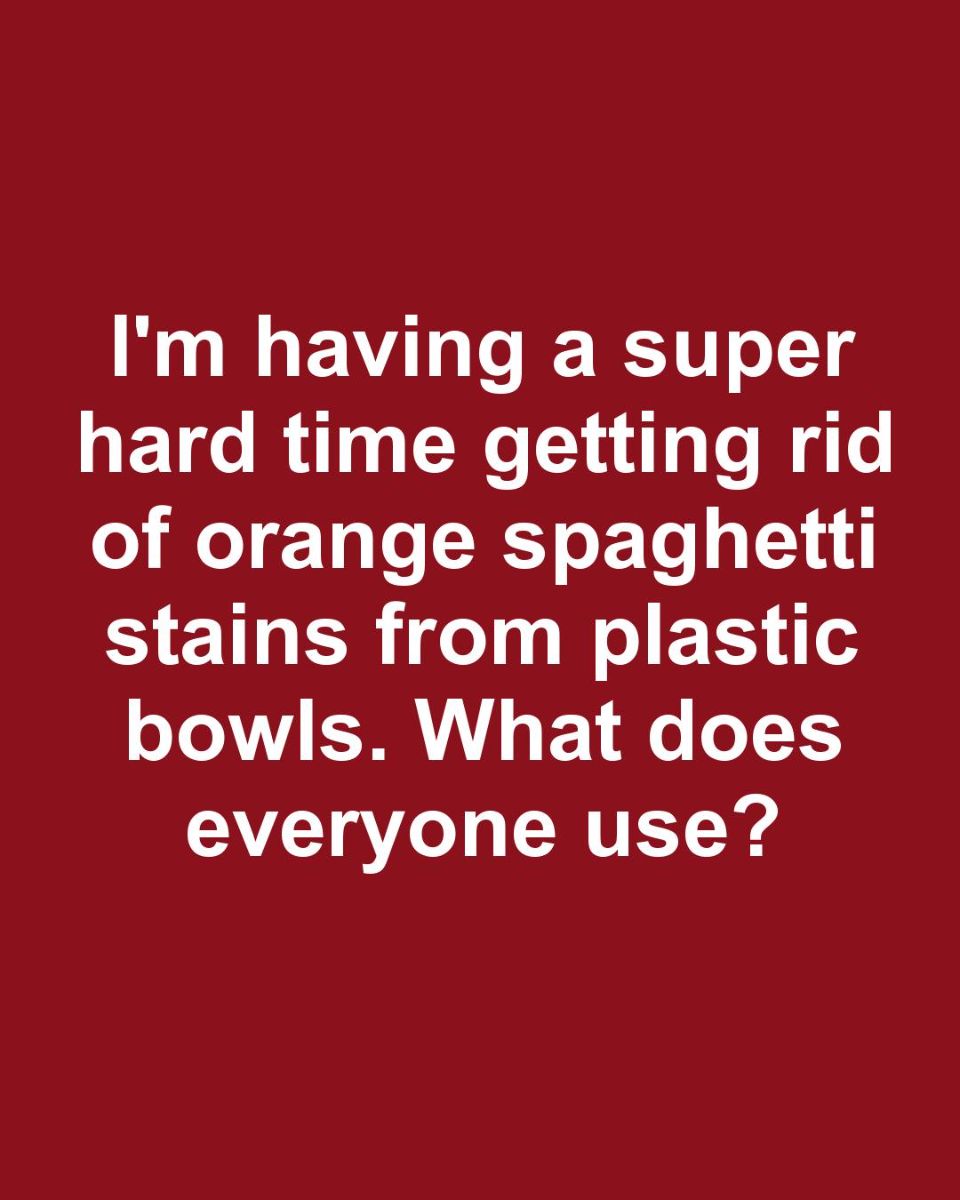The Chemistry Behind Common Stains from Tomato-Based Sauces

What does everyone use?
Tomato sauces contain a combination of pigments called carotenoids, the most prominent being lycopene. These pigments are lipid-soluble and bond well with any fats or oils present in the sauce. Moreover, the acidity in tomatoes can alter the surface of plastic, making it more susceptible to absorbing these pigments. This combination of lipophilic pigments and acidity creates a perfect environment for staining, as the oily components of the sauce help these pigments penetrate and set into the plastic material.
Effective Pre-Treatment Techniques for Stain Removal
Before settling into a full cleaning session, pre-treating your plastic bowls can significantly improve the stain removal process. One effective method involves applying a layer of baking soda paste (mixing baking soda with water) directly onto the stain and letting it sit for several hours, or even overnight. Another tip is to rinse the plastic immediately after use with cold water to prevent the stain from setting, as hot water can cause pores to open and absorb more pigment. Using a vinegar soak can also help break down lingering residues before washing the bowl.
Best Cleaning Agents and Detergents for Plastic
When regular dish soap falls short, certain cleaning agents specifically designed for tough stains can make a difference. Oxygen bleach is known to be effective for non-abrasive cleaning on plastics and may help to remove set-in stains without damaging the material. Additionally, specialized plastic cleaners or degreasers that are made to tackle stubborn food stains can be employed. Some people find success using a bit of dish detergent combined with a tiny amount of household bleach, though caution must be taken to ensure thorough rinsing to avoid chemical residues on dishes.
Common Household Remedies and Their Effectiveness
A variety of household remedies have gained popularity for their effectiveness against orange spaghetti stains, and some are surprisingly simple. Abrasive agents like baking soda or vinegar mixes can sometimes lift stains after sitting and then gently scrubbing. Lemon juice, with its natural acidic properties, can serve as a natural bleaching agent. Another commonly mentioned remedy is using sunlight; placing the stained bowl in direct sunlight can naturally bleach out the stains over time. Yet, while these remedies hold potential, results vary, and they might not work equally well on all types of plastic.
Innovative Solutions and Gadgets for Stain Removal
For those looking to gadgetry for answers, several innovative solutions have become popular among stains warriors. Ultrasonic cleaners, traditionally used for jewelry, can be adapted to clean small kitchen items. These devices use high-frequency sound waves to agitate a fluid that aids in removing even the most stubborn particles. Steam cleaners can also be effective, using high-temperature steam to lift and remove residue embedded in the plastic. Additionally, many companies now offer specialized sponges and eraser pads designed for plastic stain removal, which incorporate micro-abrasives to combat tough spots effectively.
Preventative Measures to Avoid Future Staining
Preventing stains from setting in the first place can save a lot of scrubbing later. One simple preventative measure is to coat your plastic bowls with a small amount of oil before loading them with tomato-based sauces, which creates a barrier between the sauce and the plastic. Alternatively, consider using glass or ceramic dishes for foods known for causing tough stains. Wiping bowls clean as soon as possible before washing can also help prevent the stain from setting. Moreover, storing tomato-based leftovers in glass containers instead of plastic can avoid repeated exposure from further staining your plasticware.
Evaluating the Environmental Impact of Different Cleaning Methods
While tackling stubborn stains is important, considering the environmental impact of your chosen methods is equally vital. Many heavy-duty chemicals can be effective but also potentially harmful to the environment if not disposed of correctly. Natural remedies tend to have a lower environmental footprint, though they might not possess the same efficacy levels for severe cases. Ideally, adopting a combination of methods that use minimal resources while achieving satisfactory results will strike the best balance. Opting for environmentally friendly, biodegradable cleaning agents can further reduce your ecological impact.
Conclusion: Finding the Best Solution for Your Needs
Finding the right solution for removing orange spaghetti stains from your plastic bowls will largely depend on your specific needs and circumstances. While some methods may take more effort, others provide quick fixes but might come at an environmental or monetary cost. Weighing the convenience, effectiveness, and sustainability of each approach can guide you to what’s best suited for your lifestyle and commitments. Whether through pre-treatment, using specialized detergents, or leveraging household hacks, maintaining clean and presentable kitchenware is achievable with the right approach.
Seeking Community Advice: What Works for Everyone Else
Beyond established methods, there’s significant value in learning from shared community experiences. Engaging in online forums, social media groups, or even neighborhood chats can open up a wealth of authentic, tested advice. Often, real-life tips from fellow tomato-sauce enthusiasts might introduce you to simple tricks neither science nor research has yet highlighted. Sharing your successes or setbacks can lead to a collective knowledge base, where everyone benefits from each other’s trial and error, turning stain dilemmas into triumphs of communal support.
